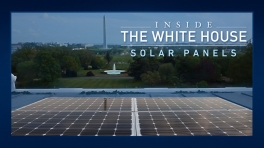Learn: Clean Energy Economy
A New Foundation | Going Green | Get Involved | Learn | Share
Clean Energy Economy Progress So Far
Recovery Act: The American Recovery and Reinvestment Act included more than $80 billion in clean energy investments. Through these investments, American companies and American workers are involved in unprecedented growth in the generation of renewable energy sources, expanding manufacturing capacity for clean energy technology, advancing vehicle and fuel technologies, and building a bigger, better, smarter electric grid, all while creating new, sustainable jobs. By 2012, clean energy investments in the Recovery Act are expected to create more than 700,000 jobs, and put us on track to meet the goal of doubling our renewable energy generation, including solar, wind and geothermal, in just 3 years.
Appliance Efficiency Standards: The Administration has forged more stringent energy efficiency standards for commercial and residential appliances, including microwaves, kitchen ranges, dishwashers, light bulbs and other common appliances. This common-sense approach makes improved efficiency a manufacturing requirement for the everyday appliances used in practically every home and business, resulting in a significant reduction in energy use. Altogether, about two dozen new energy efficiency standards will be completed in the next few years.
Offshore Energy Development: Within the Administration’s first 100 days, a new regulatory framework was established to facilitate the development of alternative energy projects in an economically and environmentally sound manner that allows us to tap into the vast energy potential of the Outer Continental Shelf (OCS). The National Renewable Energy Lab estimates that development of wind energy alone on the OCS may provide an additional 1,900 gigawatts of clean energy to the U.S.
Federal Government Sustainability: President Obama signed an Executive Order on Federal Sustainability, committing the Federal Government to lead by example and help build a clean energy economy through Federal Government operations. The Executive Order, among other initiatives, requires Federal agencies to reduce greenhouse gas emissions by 28% by 2020, increase energy efficiency, and reduce fleet petroleum consumption.


